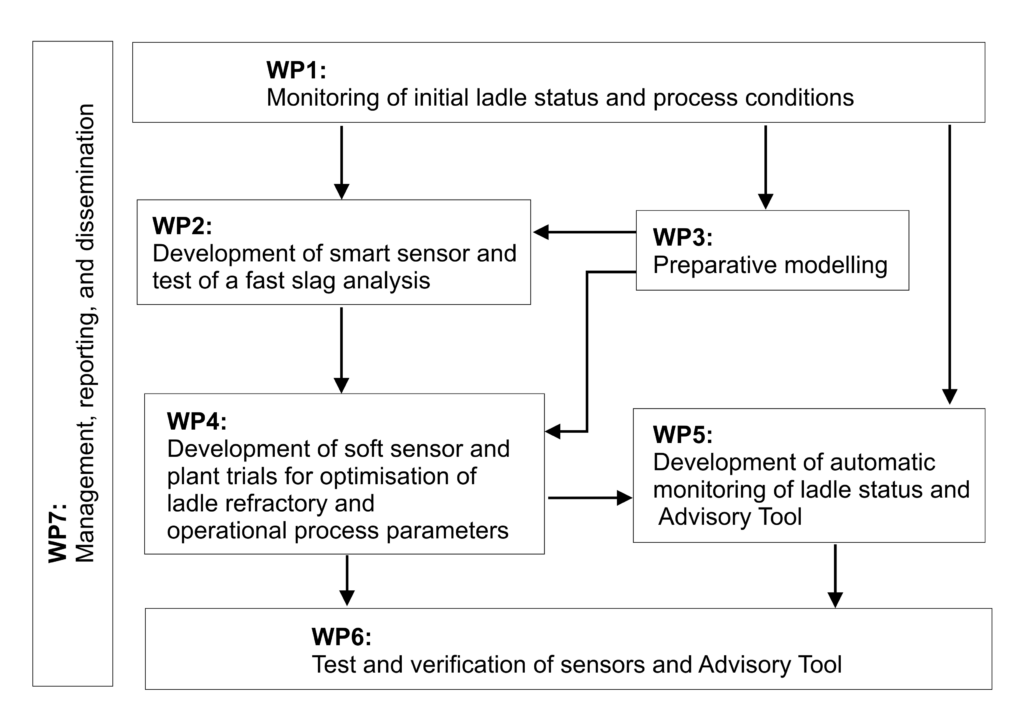
The proposed work will be realised within 6 technical work packages (WPs 1-6) and one work package regarding management,reporting and dissemination (WP7).
Within WP1 all information of the initial status (as it is at the beginning of the project) will be collected. This will include the acquisition of data from laser scanning and refractory temperature measurement, that will be used to validate the models in WP3. Furthermore, this work package includes a preparation of data collection for soft sensor and data-model approaches.
In WP2 work will focus on the new smart sensors, starting with a concrete definition of specifications for the smart sensors. This WP also includes the layout, design, construction and first tests of smart sensors installed at stationary vessels and finally at the ladle for collection of data (e.g. enabling T measurement in refractory). Additionally, it will be tested whether a fast slag analysis could be a new process parameter for slag conditioning to reduce refractory wear and improve ladle treatment performance.
In WP3 different modelling work is scheduled: A numerical model will investigate ladle refractory temperature and stress with regard to wear and process data. A second model of the fluid flow coupled with heat transfer within the liquid bath will use the actual profile of the interior of the ladle. A third approach includes different ML models to develop a first approach of a complete ML model considering all inputs from ladle data, process data, analysed and developed indexes.
Within WP4 the soft sensor for monitoring the ladle status will be developed based on the data and work from the previous work packages, and will be calibrated by using measured values, e.g. from smart sensors. Additionally, extensive plant trials will be performed to evaluate different refractory material and operational process parameters (e.g. stirring, slag conditioning). The results will be used to define strategies and optimal practices considering the actual status of the ladle.
In WP5 work is foreseen that is related to developing the Advisory Tool. In a first step, basic rules and models will be defined, and in a second step the Advisory Tool for steel plant operators itself shall be developed and installed.
Final tests of smart sensors, soft sensor as well as the Advisory Tool will be performed, and ML models will be optimised in final WP6. Information from these tests and outcomes of the project will be discussed regarding improvements related to ladle life, temperature distribution within refractory, economic and environmental aspects.